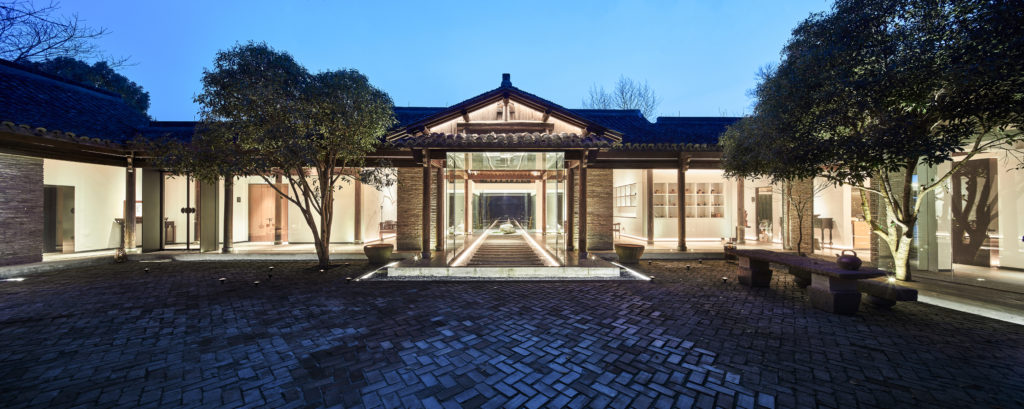
AT DESIGN’s Language for Symbiosis (Photo: AT DESIGN)
English playwright Arthur Wing Pinero once said, “Where there’s tea, there’s hope.” Tea has been a daily beverage in many countries, both the eastern and western, for a long period of history. To Moye Shen, head designer and founder of AT DESIGN based in Hangzhou, Unbounded•Xixi Tea House is his answer to where tea can be consumed and enjoyed. The multifunctional space is not just a place for tea but an alternative for meetings, delicacy foods, and a best possible location to enjoy scenery in the Xixi National Wetland Park.
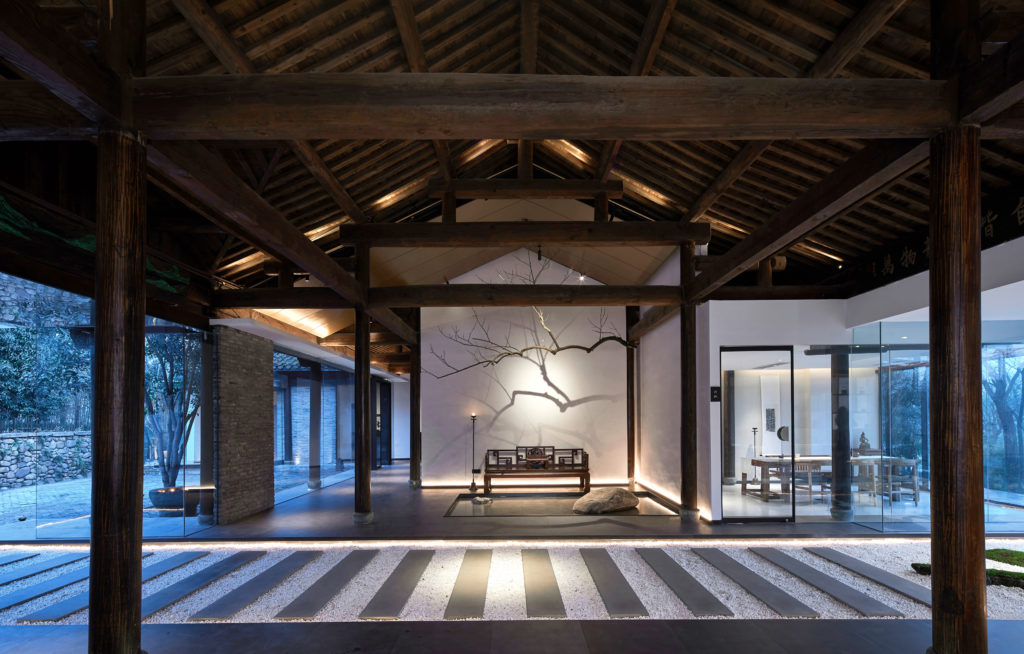
Photo: AT DESIGN
‘Symbiosis’ is the key design concept at AT DESIGN, a multi-award-winning design firm. “It is a symbiosis between different cultures, man and technology, the outside and inside, as well as man and nature… Culture can be in different dimensions,” Shen shared. When he inspected the site of Unbounded•Xixi Tea House for the first time, he noticed such a symbiosis instantly. “The structure was in a very traditional Chinese style. As a tea house, you could imagine a series of movements: Picking up tea leaves from trees, brewing a cup of tea, appreciating tea aroma, and enjoying a cup of tea as well as the unique scenery outside.” In Shen’s eye, this is a symbiosis of man and nature, “The nature is inside our body when we consume the tea.”
As you enter the tea house, you will be stunned as you encounter a large glass box at the entrance, which represents an invisible boundary. “The owner of the tea house has a background in the Internet industry,” Shen told CTI. “We use the Internet every day but it is invisible that you can’t see or touch it.” The design concept of the tea house echoes this idea: To blur and break the boundary. “We keep the structure of traditional Chinese residences as the East, the local; the design is a dialogue between the modern and traditional, between advanced technology and modern lifestyle…” Shen regards this as an interpretation of symbiosis, a concept of boundless space.
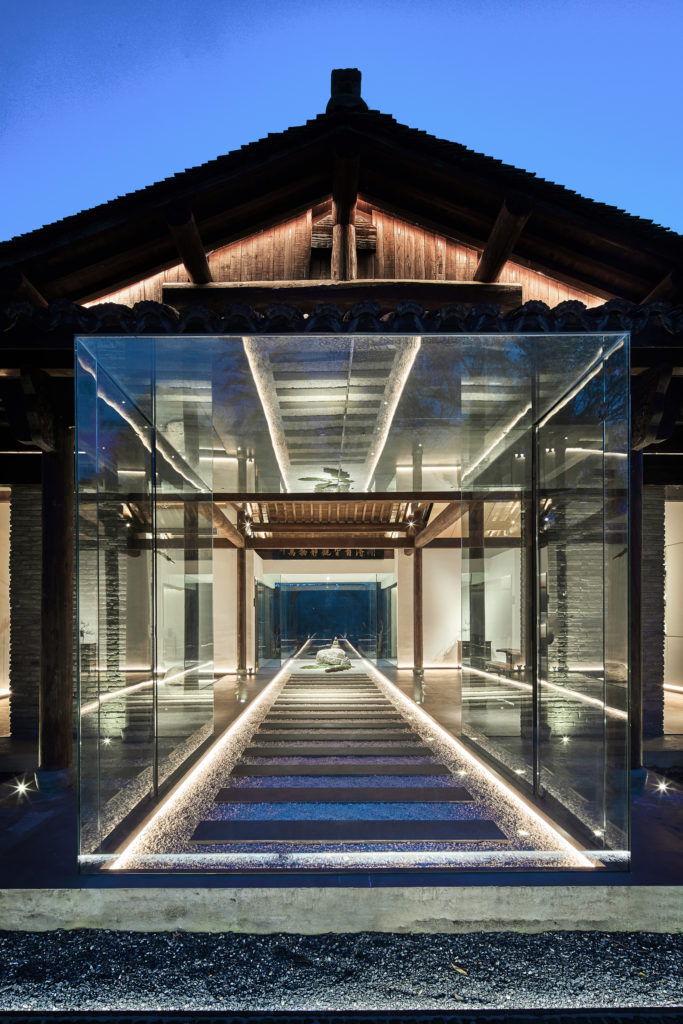
Photo: AT DESIGN
Exploring the space, you will see trees and water through the big windows. A stone is revealed as you walk further into the space; take a closer look as you find a Buddha statue on top of the stone, reminding you of the Eastern culture. Wait, there is a tea cup on the side of the statue, which represents tea.
The tea culture in China varies based on regions and methods of tea making and brewing. But tea remains as a popular beverage for both the young and elder, both at work and at home. “The custom and habit of enjoying tea is very different though. So is the tea culture in different areas,” Shen said. “Tea culture sometimes is regarded as a symbiosis of the traditional and present.”
When designing the tea house, the design team decided to keep the column beam structure completely, which is an unusual practice. “Before the renovation, there were so many different design elements inside the tea house, which was complex and might be stressful for users in the space,” he continued, “To me, the structure belongs to the house as a part, which represents the past.”
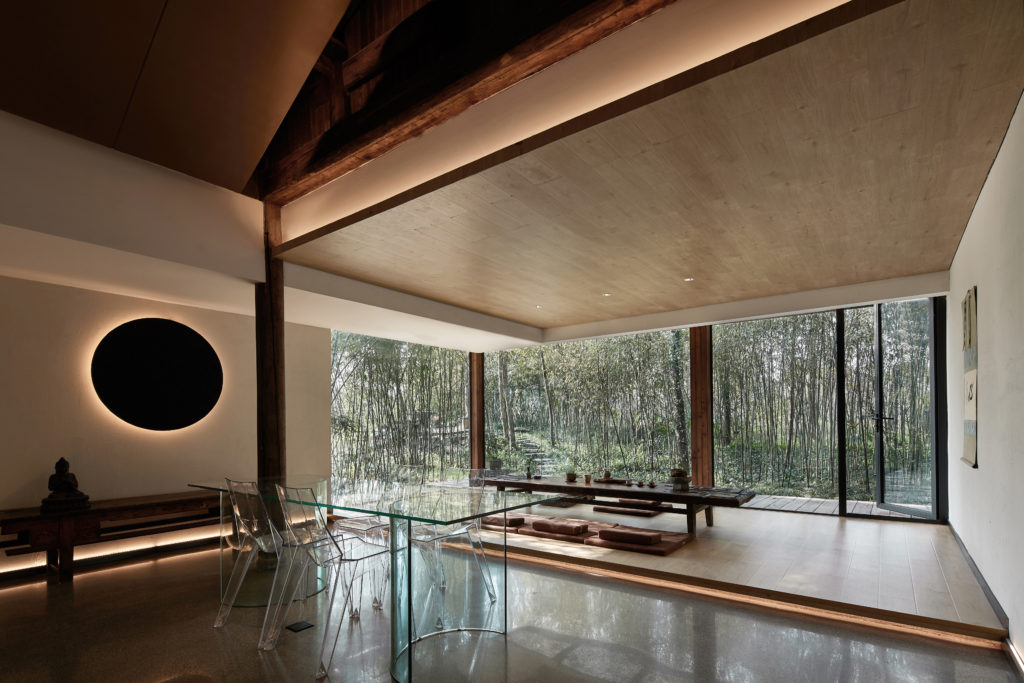
Photo: AT DESIGN
The large floor-to-ceiling glass wall not only allows sunlight into the tea room, but also provides a natural change of scenes according to seasons and weather. “The post ‘keeps’ a distance to the glass wall, which I call a friendly relationship,” Shen said.
You will notice the emptiness in this space as nothing is overdone but to leave the person to feel the space, to see the world outside, and to taste the cup of tea in hand. “It’s like consuming tea with nature… The surroundings are just add-ons as the most important thing is still tea.”
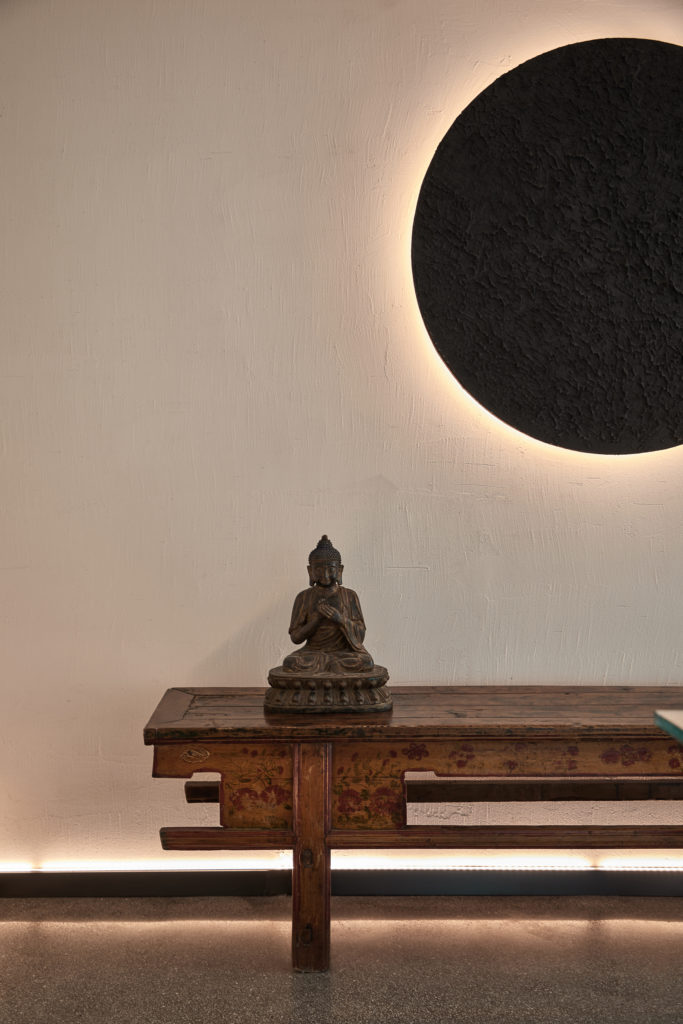
Photo: AT DESIGN
Shen barely uses paintings for the interior of the tea house. “The biggest decor inside should be the window walls. In a sunny day, you can enjoy a nice view of the park directly from the tea room. If it rains, the scenery changes accordingly. Different seasons, different angled spaces. The interior becomes alive,” he said. Shen and his team also invest- ed a lot in the history of tea drinking habits dating back to Wei-Jin and the Southern and Northern Dynasties to gain a deep understanding of the tea culture. “The idea has to be expressed through certain technologies or methods,” he explained, “For example, mixture of different materials to make a new type of paint, be it sands or straws. When you brush this mixture on the wall, it becomes a new material to express your design concept.” This becomes a powerful expression, a new life, a symbiosis that lives in the space…
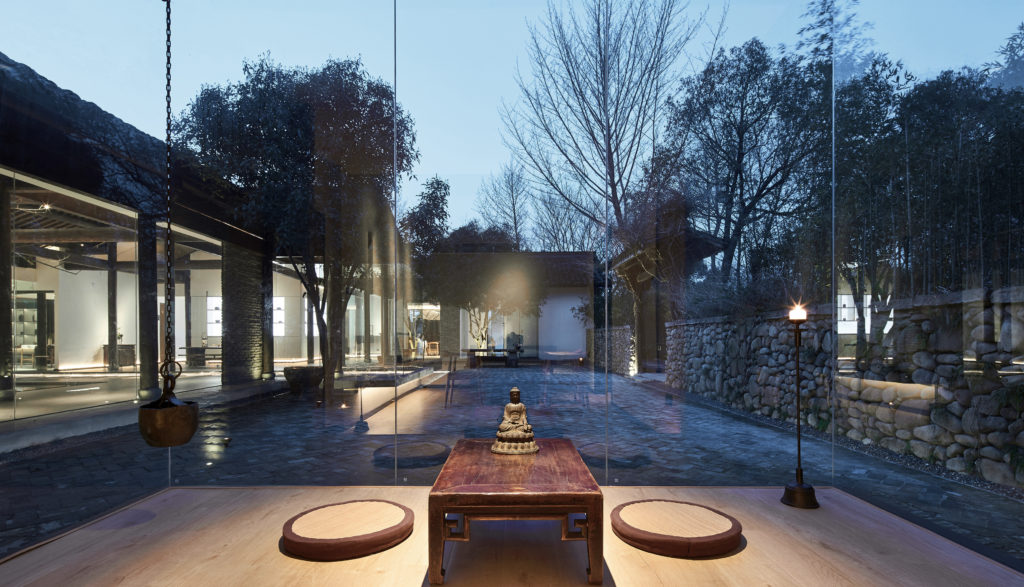
Photo: AT DESIGN
In Shen’s own words, the tea house is opened up as both a space and a medium. It not only provides a wide range of teas and matching desserts but also serves as a proper restaurant. “The headquarters of Alibaba is nearby, which attracts many employees to come over for their brainstorming sessions as well as regular internal meetings and catch-ups with clients.
The food is not only for eating but fuels the brains,” Shen shared. A small private room can host five or six people while the meeting room can be up to 30 people, making it a perfect location for small launching ceremonies and private occasions.
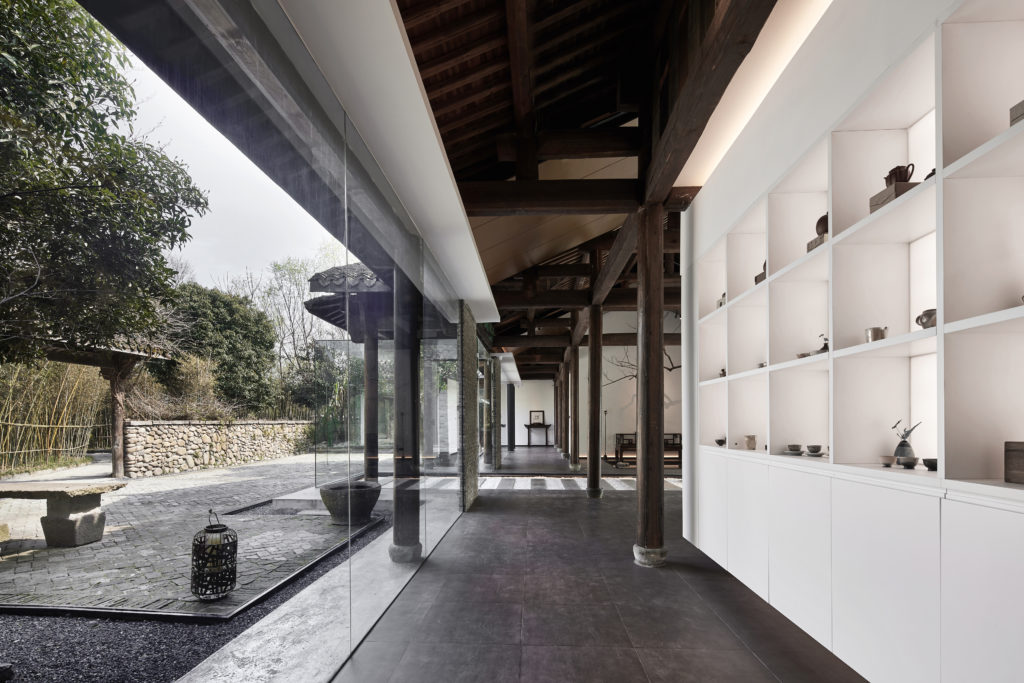
Photo: AT DESIGN
In the past years, AT DESIGN’s works have been widely featured in magazines, TV programs, and websites. “For us, media help us to reach more people to share our concept of symbiosis and to allow people to think about what design is for,” Shen concluded, “Our design can interpret the true meaning of life, which brings people back to the life they want. Live for ourselves, not anybody else but you.”

About Designer
Moye Shen is a multi-award-winner, founder of AT DESIGN. Shen has over 15 years’ experience in design, and is after a concept of symbiosi.
About AT DESIGN
AT Design was founded in early 2014, and always adhered to the symbiosis as the core idea of the company’s design and development. The company now has a strong team made up of 18 people for projects ranging from interior design, architecture to landscape design.



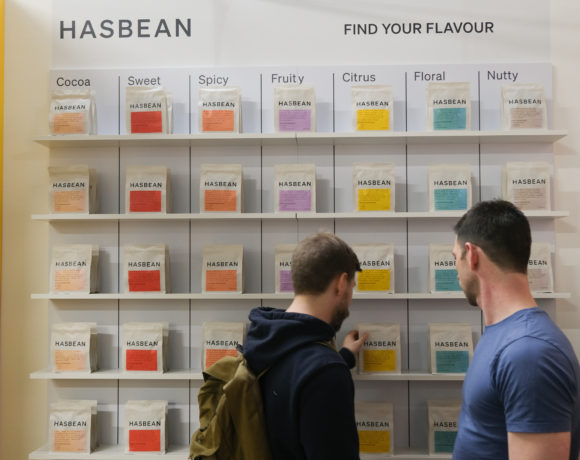
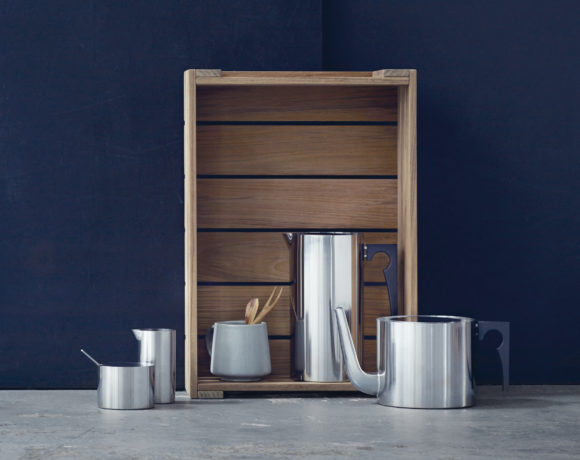
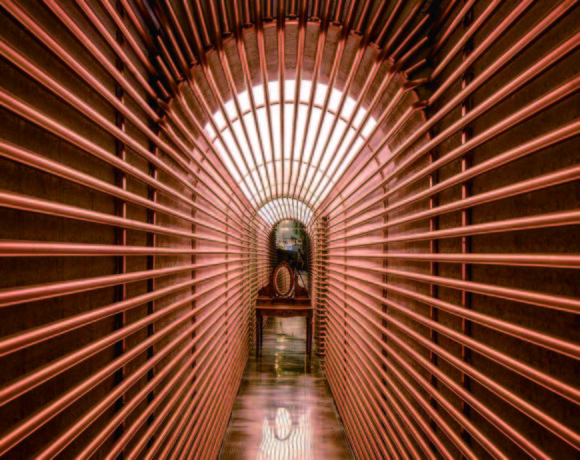






NO COMMENT